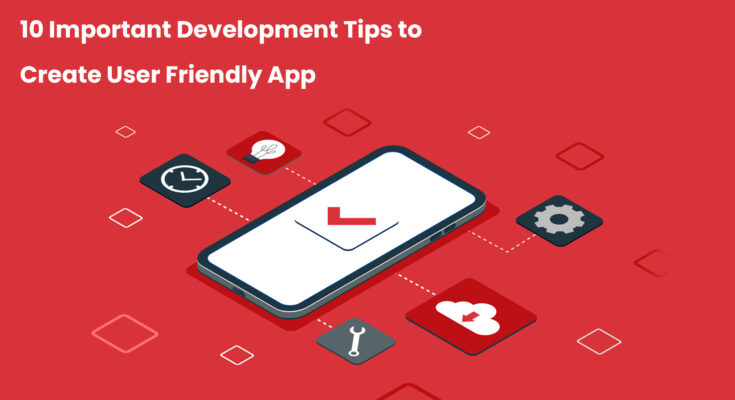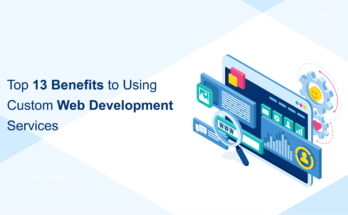User-friendly apps are essential for many reasons. With the increasing competition in the app market, developers are constantly striving to improve all metrics related to their users to attract new users and retain their existing ones. People generally spend less than a minute deciding whether they like a product and find it convenient, but this is not true. When their expectations do not match reality, they can dismiss the app, resulting in them deleting it immediately and returning to exploring.
The assumption that consumers would spend time experimenting with an app is one of the most common mistakes made by app owners. As it turns out, users don’t have the time. Exceptions may include trendy apps like ClubHouse that hit the top charts due to the exclusivity hook, and everyone wanted to be part of it.
So it’s crucial to create a good user interface/experience so users can easily navigate your application when they’re walking their dogs or selecting cereals at the supermarket!
What do user-friendly apps do? How can a user interface be made intuitive? How can UX be improved? We will provide tips to address these questions in this article.
An application with a user-friendly interface
A client and developer should clearly understand what “user-friendly” means before beginning a new project. User-friendly mobile apps usually:
- It has an intuitive UX and is easy to navigate;
- the features are logically ordered/follow one another;
- understanding the functionality of each feature does not require additional time;
- runs without errors, bugs, or crashes;
- has a high level of security;
- Create an interface that is appropriate for the audience and customize it accordingly;
- be compatible with all devices, platforms, and screens.
Companies must keep the following aspects in mind, so the end result is valid/unique for TA and cost-effective for stakeholders.
What is the best way to create an app that users will love? 10 Important Development Tips to Create a User-Friendly App
What is the best way to build an application users will love? Since there are many groups you can target, and every one of them has different expectations and needs, it’s hard to say which will perform best. To help you out, we prepared 10 tips on developing a mobile app that is both user-friendly and effective.
Tip #1: Make your app useful!
This is an essential aspect of mobile app development. Apps must, first and foremost, make the users’ lives easier by saving them time and money, among other things.
You can begin by incorporating that user value into your elevator pitch. Are you solving a real problem for people? Speak as concisely as possible. The most important thing is to test this on people in your target market, not just on your friends, family, and random people. Consider whether they think what you are offering is worth their time.
You can use this list as a template: My company (name), is developing (a defined offering), to help (target audience), (solve a problem).
Tip #2: Understand your customers
Getting people to test your app before going live might seem obvious, but we often see developers skip over it due to lack of time and impatience. Your product cannot be designed or developed by someone who was in any way involved. How will the testing take place? If your app is intuitive and does not cause frustration, how do they navigate it? An MVP development process can help with testing and collecting feedback.
If any changes are required before the launch of your app, you can introduce them after you complete the beta testing. Using social media is a great way of getting constructive feedback from non-involved people about what can be improved and what they expect.
Tip #3: Ensure that onboarding is (super) easy
Users no longer need to register to access apps. Requiring users to go through this step creates very high bounce rates. By asking people about their credit or personal card details even before they use the app, you eliminate any barriers that may stop people from using it.
Any of these things may be required by your application. Before asking users to trust you and commit, make sure they already like your app.
Tip #4: Develop apps according to best practices
It is logical to follow in the footsteps of those who have already achieved success since there are so many applications around and so few have succeeded. You needn’t copy anyone else; all you have to do is avoid repeating the mistakes of others.
Designing apps is essential in this regard. Though we all love to let our imaginations run wild, in the end, apps have to be functional. Therefore, it is not wise to experiment beyond a well-tested framework, as you may end up making a huge blunder and losing money. Make sure your designer understands mobile, and be familiar with widely available guidelines such as Google’s Material Design.
Tip #5: Beware of redirects
An ideal app should have all the features necessary to navigate and solve his problems. This means that you should not link or redirect to external websites from your application.
You should never give the user too many options, even if you can include everything in your app. Rather than providing many low-quality solutions, put your efforts into improving your product’s key functionality.
Tip #6: Touchpoints designed for users
Be prepared for specific situations when the user might use your app. Push notifications seem like a great tool to experiment with from a technical perspective.
They are viewed differently by some people. However, that’s mainly due to the way many apps use them. As long as they are applied appropriately, push notifications will pull people back into your product at precisely the right time.
Imagine Uber sending you a message to let you know that your driver has arrived at the exact time you need it to. You can live without this information, but it’s essential, so it won’t irritate you.
Tip #7: Integrate whenever possible
A simple statement like ‘don’t reinvent the wheel’ summarizes this. You can integrate the tools people are already familiar with, and you can do so at a low cost, such as a payment system, a chatbot, or a file-sharing feature.
By teaming up with high standard systems that people are already familiar with, you make it easier for them and make your product better. Make sure to utilize ready-to-integrate components, such as Stripe, Send Bird or Google Docs.
Tip #8: Create beautiful things that people will want
Though good user experience is the main purpose of design (see point 4), how your product looks shouldn’t be ignored either. Apps with a slick appearance often get more downloads if they are launched on the Apple Store or Google Play.
Putting enough time and effort into creating a stellar design will pay off since people like to look at pretty things. Apps in “cool” industries like entertainment, social networks, or trends are especially at risk in this regard.
Tip #9: Establish a safe work environment
Data breaches are becoming more common as there are so many apps out there. You should use reliable payment service providers like Stripe or Braintree if you require users’ credit card information.
If you are concerned about your app’s security, integrating a Facebook or Google login is often safer. It’s because you are outsourcing your users’ security to more secure products. A very common user practice is to use their social media profile to log in directly instead of registering again.
Tip #10: Listen to your users to create a friendly app
Technology advancements in mobile app designing are exponential, as you know. Mobile apps can take advantage of new operating systems to avoid former pitfalls. You may have to adjust the layout of your product due to the constant change in smartphone screen sizes. It is also possible that your users’ behavior will change, so what worked perfectly yesterday may become a nightmare next month.
Final thoughts
A user-friendly app should have an easy-to-use interface and seamless functionality. A user’s experience is enhanced by data security and privacy protection features. It is fair to mention that a well-designed application with a great user experience could help boost your online business. Hence, improving the user experience while launching the application is imperative. We hope that the following tips will help you achieve your objective, and we hope that they will be helpful to you.




